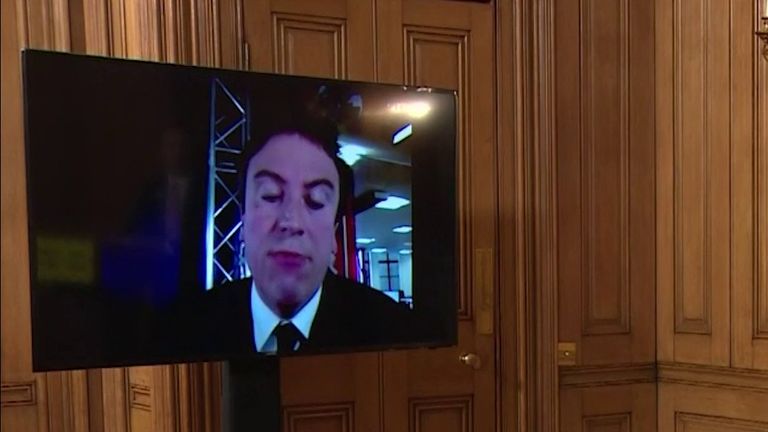Coronavirus: Is the science about rising R numbers just too politically inconvenient?
Scientists are saying the R number is rising in places, yet the government is going ahead with easing lockdown measures.
Saturday 6 June 2020 10:08, UK
Somewhere, under the cover of anonymity, government scientists appear to be muttering about the reliability of some of the more politically inconvenient coronavirus data coming out at the moment.聽
This outburst of incognito pontification just so happens to have occurred on the day that no scientist appeared to have a free slot in their diary to take part in the daily coronavirus press conference, despite the clear utility of having a simple scientific explanation of the confusing picture the nation faces.
Curious. More on that later. First, some context.
Earlier, a study by Cambridge University, in conjunction with Public Health England (PHE), revealed that the R number - the number of secondary infections caused by a single infected individual - appears to be rising in England.
In the North West, it was likely to be above one, while in a second study it could be above one in the South West, meaning transmission is increasing in these communities.
It is hard to overstate the political significance of this moment. Politicians have made the R number the benchmark.
On 24 May, Boris Johnson told the nation "we must keep that R below one", health secretary Matt Hancock has pledged "at each step we'll closely monitor the impact on R".
And education secretary Gavin Williamson declared: "We can control coronavirus by ensuring the R does not go above one."
Yet now the R rate in England is between 0.7 and 1, and in parts of the country PHE and Britain's top government scientists appear to acknowledge in private it appears to be above one.
Despite this, no lockdown easing measures have been reversed. No sign the government is slowing on its initial timetable for getting the economy going again.
The Cambridge study goes further, attributing the rising R to lifting of lockdown measures, having traced on a timeline the date of the various relaxations with the increase in the infection levels.
"This is probably due to increasing mobility and mixing between households and in public and workplace settings," says the study.
How worried should we be?
Well PHE, which co-authored the Cambridge University study revealing regional R value was above 1 in some areas, appeared intensely relaxed.
Dr Yvonne Doyle, medical director for PHE, said in a statement: "Our estimates show that the regional R numbers have increased although they remain below 1 for most of England - this is to be expected as we gradually move out of lockdown."
This is a significant statement. Firstly, it shows the government has abandoned the precautionary approach - the determination to play down the fact that some areas have infection rates increasing is apparent.
Secondly, it concedes the R rate is rising perilously close to 1 - something that politicians appeared to intimate was a bad thing - and says this is only to be expected.
:: Listen to the All Out Politics podcast on , , ,
PHE, which is facing much of the blame from senior Conservatives for mistakes during the coronavirus pandemic, is part of Mr Hancock's health department.
So what of the government scientists' mutterings?
In public statements, officials imply this is nothing to worry about.
They now prefer to concentrate on dropping infection levels, even though there is huge discrepancy between the Office for National Statistics infection rate and that estimated by the Cambridge University modelling.
But now in briefings, they appear to go further. One BBC journalist said in a Zoom call with Cambridge scientists that SAGE scientists were saying the entire concept of regional R values was unreliable, and that they should not pay too much attention to them.
Apparently, effectively rubbishing an inconvenient study on the day of its release, but not saying so in public standing in front of the TV cameras.
The Cambridge team responded openly, saying they acknowledged the levels of uncertainty around their data but a consistent rise in the infection rates across the regions gave them confidence the data had validity.
How much does this matter? It is too early to say if this is part of a worrying politicisation of government scientists or something more harmless.
But, it is a trend worth keeping an eye on.







